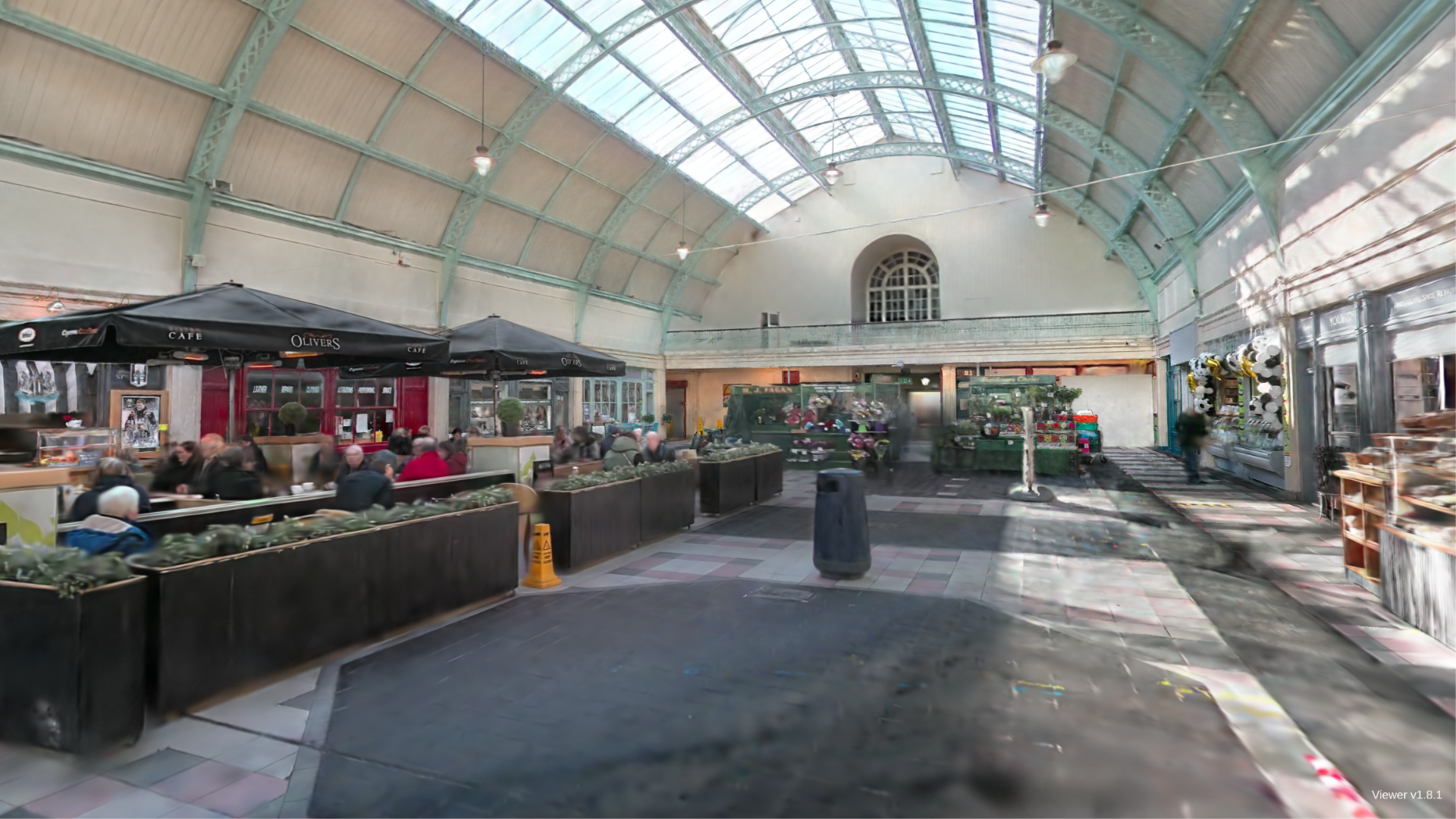
Technical
Gaussian Splatting: The Future of Reality Capture
How gaussian splatting is making reality capture faster, more realistic, and incredibly versatile across industries
Gaussian splatting stands out for creating detailed, photorealistic assets quickly and easily.
Widely used across industries, including real estate, film, public safety, and industrial inspection.
Use Gaussian splatting to create virtual 3D walkthroughs, reconstruct crime scenes, and produce special effects for cinema.
Handheld scanners and software from XGRIDS can be used to create Gaussian splats.
Esri has announced that ArcGIS Pro will soon support Gaussian splatting as a new layer type, expanding its applications from digital twins of infrastructure to healthcare mapping.
The latest DJI Terra upgrade adds Gaussian splatting support, enabling faster, high-quality 3D reconstructions from drone data.
Reality capture technology is advancing rapidly, making it easier than ever to create detailed digital versions of real-world spaces.
While gaussian splatting has existed for some time, recent improvements in workflow and accessibility have made it one of the most practical methods for creating highly realistic digital models.
Its growing adoption across industries—from real estate and industrial inspections to marketing and cinematography—demonstrates its versatility and value.
Gaussian splat of Ryhope Engines Museum
In this blog, we explore how gaussian splatting is being adopted in different sectors and discuss where the technology is heading next.
Reality capture explained
Reality capture is the process of creating accurate digital models of physical spaces using images or videos.
These digital models are processed through specialised software, such as Lixel Colour Cyber Studio or DJI Terra, to create highly detailed, immersive representations.
It’s important to distinguish reality capture from other survey methods like photogrammetry and LiDAR. While they generate digital models, photogrammetry and LiDAR typically create outputs that look clearly artificial, focusing on precise measurements or mapping light patterns.
By contrast, techniques like gaussian splatting are designed for true-to-life visualisation, delivering a much more photorealistic experience. This method works by using a dense cloud of ‘splats’—small 3D points in space—to create highly realistic digital reconstructions.
Data can be collected using cameras, drones, handheld scanners, or even a mobile phone, with the option to add high-definition images for enhanced clarity and detail.
Processing is quick and straightforward, with no need for specialist software, and finished datasets can be easily shared via a link. For example, with XGRIDS Lixel Cyber Colour Studio, data is collected using a compatible scanner, processed in the software, and exported as gaussian splats.
This combination of speed, simplicity, and consistently high-quality results is driving widespread adoption across industries. From real estate virtual walkthroughs to industrial inspections, more sectors are turning to gaussian splatting for accessible, photorealistic digital capture.
How industries are using gaussian splatting
Gaussian splatting’s adaptability means it can be applied in almost any industry.
Here’s some examples of how different sectors are using gaussian splatting.
Real Estate
Agents and property marketers use gaussian splatting to create detailed, lifelike virtual tours.
These tours let clients explore properties as if they were physically present. Unlike fixed-point cameras that capture a single viewpoint, gaussian splatting allows operators to move freely through spaces, capturing every angle for a more immersive experience.
To illustrate, our survey team surveyed Newcastle’s Central Arcade in just eight minutes using a handheld scanner, showcasing how quickly and effectively this technology can map indoor environments.
The Lixel L2 Pro—combining LiDAR, visual, and IMU modules with AI—captured real-time point cloud data. This was then processed in XGRIDS Lixel CyberColour (LCC) Studio to generate the resulting Gaussian splat video.
Industrial Inspections
Facility managers and inspectors use gaussian splatting to build accurate digital twins of sites. This approach makes remote inspections and maintenance planning more efficient. Immersive walkthroughs help map out emergency exits and assess safety features.
Gaussian splats also make technical data easier to understand, offering clear visuals that improve communication across teams, even for those without specialist training.
Alex Williams, Technical Geospatial Specialist at heliguy™ shares:
“It’s exciting to be able to supplement survey data with gaussian splatting. It makes it much easier to communicate the details found in more complex models, like point clouds or photogrammetry, especially to those who aren’t specialists in the field.”
Filming
In the film industry, gaussian splatting is used to create realistic digital environments for virtual production, visual effects, and set design. Filmmakers capture locations using scanners, cameras, or drones and generate 3D models of sets or landscapes.
These assets serve as digital backdrops, help with previsualisation, and make it easier to blend live-action with CGI. The speed and realism of Gaussian splatting reduce the need for physical sets and streamline post-production, offering a cost-effective solution for immersive visual effects.
The evolution of gaussian splatting
Gaussian splatting is quickly evolving as major software providers continue to adopt and integrate the technology, making it more accessible than ever and expanding its practical applications across industries.
A significant recent development is the announcement that Esri will add gaussian splatting as a new layer type in ArcGIS Pro, one of the most widely used GIS platforms worldwide.
ArcGIS Pro supports everything from detailed digital twins of major infrastructure—like airports—to mapping access to healthcare. Integrating gaussian splatting will allow users to create more photorealistic and interactive 3D models directly within the platform.
Another milestone is the inclusion of gaussian splatting in DJI Terra’s latest update.
DJI Terra is a leading tool for reality capture and mapping, and this new feature enables users to create faster, high-quality 3D reconstructions from drone data. With the addition of gaussian splatting, DJI Terra can now rapidly produce highly realistic 3D models from standard photographs.
This advanced rendering technique significantly outperforms traditional visible-light oblique photogrammetry, especially when depicting complex surfaces—such as fine details, reflective materials, transparent features, and dense vegetation. Not only does it achieve lifelike visual effects, but it also delivers distortion-free orthomosaics, enhancing both accuracy and realism.
Now, users can employ DJI drones—like the DJI Matrice 4E—to generate photorealistic 3D Gaussian splats.
Our own tests have shown that data collected from third-party payloads, such as the SHARE UAV 203S Pro, can also be processed into gaussian splats using DJI Terra, as demonstrated below.
As industry leaders such as Esri and DJI adopt gaussian splatting, its use is set to expand rapidly, making advanced, true-to-life 3D visualisation available to a much wider range of professionals and projects.
Get in touch
To learn more about gaussian splatting and how it can benefit your workflows, contact our survey team.
Our survey specialists can help you choose the best data capture equipment and provide support with data processing.
